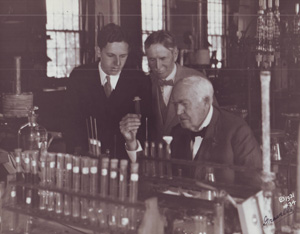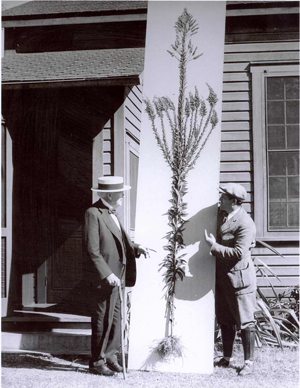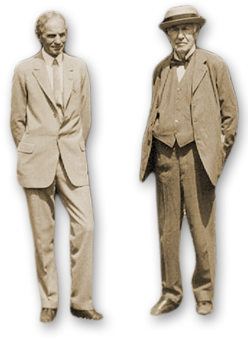Edison’s Golden Ticket: Goldenrod | Edison Botanic Research Corporation & Lab Part II
August 23, 2011
In the late 1920’s, the Edison Botanic Research Corporation (EBRC) was on a mission. Botanical specimen collectors scoured the countryside searching for trees, vines, bushes, and botanical specimens of all types so that the EBRC lab could test the potential of each plant for rubber production.

Thomas Edison, Harvey Firestone and son Roger inspect the contents of a test tube in the EBRC lab | Edison and Ford Winter Estates Archives
Which plant would produce rubber most efficiently? Believe it or not, the specimen that showed the most promise was a common weed called goldenrod.
Through careful cultivation and experimentation, Thomas Edison was able to cultivate a type of Goldenrod (Solidago Edisonia) which grew up to 12 feet high, and can still be viewed in the EBRC lab today!

A 12 foot tall strand of goldenrod | Edison and Ford Winter Estates Archives
Did you know that big changes are currently underway in the EBRC lab? Find out more in Part III of the Edison Botanic Research Corporation series.
To learn more about cultivating plants in Florida, visit the Edison and Ford Winter Estates propagating gardens.
For more information about requesting a copy of these images or any other images from the Edison and Ford Winter Estates archives, click here.


